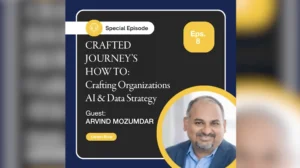Using AI to Never Miss a Minute
When lifelong Detroit Red Wings fan Zack Klima missed seeing a game-winning goal due to waiting in a long line, he knew enough was enough. Spurred to action, Klima founded and is now CEO of company WaitTime, a state of the art artificial intelligence platform using real-time and historical data to analyze crowd diagnostics. Klima sits down with Game Changers host Katie Steinberg to discuss WaitTime’s performance, success, and process.
After meeting a few key investors and entrepreneurs, Klima was able to take the chance of a lifetime and develop WaitTime. When investments came through, others noticed, “…it kind of put WaitTime and the idea of WaitTime on the radar that, okay, this is something to actually look at,” said Klima.
Instead of raising money conventionally, Klima found private investors to keep the company in-house, Klima noted, “Everyone has a swim lane…to achieve the goal that we’re all working for.”
How does WaitTime work? In the past, failed companies used beacons and bluetooth and even walkie-talkies to navigate the stadium and movement of people. Klima knew that WaitTime would need to take a different approach. Using cameras programmed with specific algorithms, Klima said, “We have four algorithms that track, individually, the movement analysis of everyone in real-times. So we look at speed of movement…direction of movement…and we do all this tracking…24 times per second.”
This patented technology enables the team to pass along real-time data and expose deficiencies in any operation, allowing more efficient productivity to move in.
When scaling, Klima said, “If you truly want to scale, you have to be with scaleable entities like Cisco, Intel, Microsoft…” and provide value to the companies through true integration, “Now we are at a point where Cisco…is now becoming our sales force globally,” explained Klima.
As for what the future holds, Klima is excited to continue growing partnerships and expand on the uses of this patented technology – and never miss a game-winning shot again.








